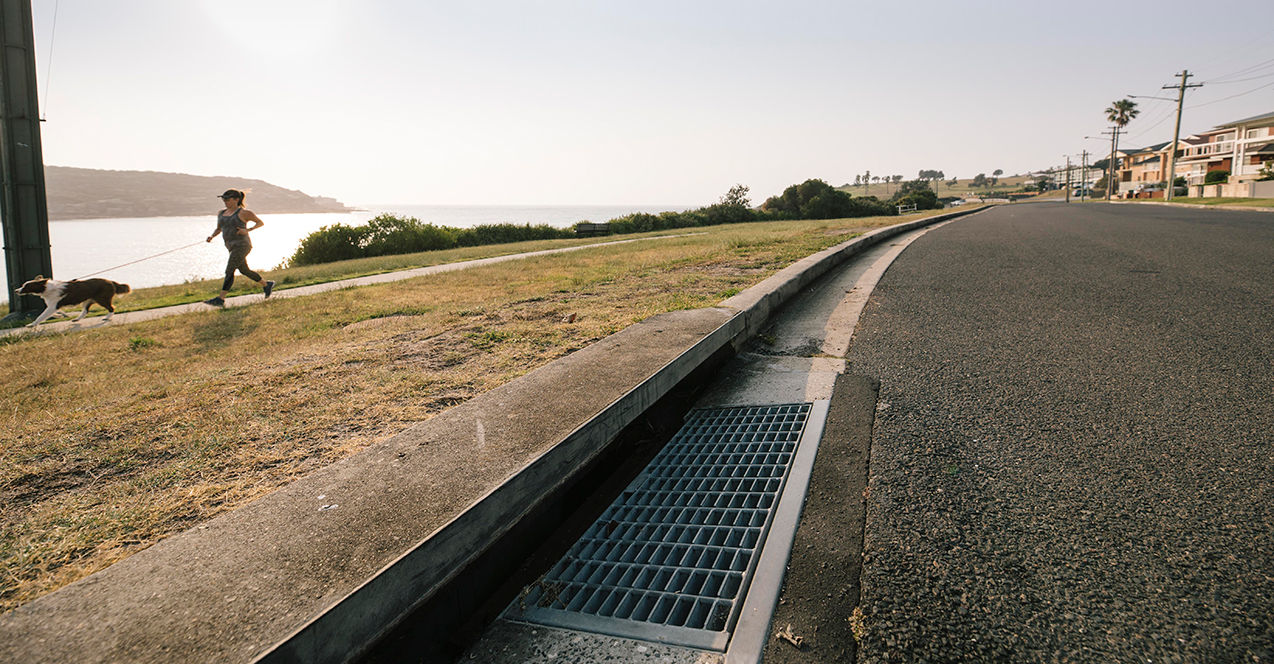Beach pollution
Did you know...
every street in Randwick City has stormwater drains? When it rains, the water flows down the street and into the drains. Along the way the water picks up whatever is left on the street and takes it with it. These stormwater drains empty into our beaches, ponds and river systems.
Just as our residents do, Randwick Council takes pride in being a coastal area. Our network of 235km of stormwater pipes can move a staggering 2,800,000,000 litres of stormwater every hour. That’s the equivalent of 1,120 Olympic-sized swimming pools! Keeping our beaches clean and pristine is a main priority for us. To keep our beaches clean, we need to keep our drains clean.
Our Beach Pollution Ends Here website takes visitors on a tour down the drain. It explains what pollutes stormwater and where drains go. You can even find drains near your home and find out where they flow to. If you’re really keen, you can symbolically adopt a drain, give it a name and download a certificate of adoption which you can share on social media!
How Randwick Council is improving water quality
1. GROSS POLLUTANT TRAPS
We’ve installed 35 gross pollutant traps (GPT) in many coastal locations to trap larger items of rubbish that flow via the stormwater drain. They remove about 300 tonnes of pollution each year, preventing it from reaching our beaches and oceans. From that, more than 80% of the pollutants are recycled.
2. WATER RECYCLING
We capture about 450 million litres of stormwater, filter it and use it for watering parks and reserves each year. This process prevents polluted water from entering our beaches and saves Council around one million dollars in water costs.
3. STORMWATER DIVERSION
We’re working with Sydney water on options for diverting stormwater away from Coogee Beach. In 2013, stormwater was diverted away from Malabar Beach, which led to an improvement in water quality.
4. CLEANING BEACHES AND STREETS
Our beaches are groomed daily for rubbish removal. We remove 200 tonnes of rubbish and excess seaweed every year. Our sweeper trucks clean streets picking up about 1,000 tonnes of rubbish a year, which reduces pollution from entering our beaches.
To find out more check out this fact sheet.
How you can help
The most effective way to reduce stormwater pollution is to stop it entering the system in the first place. Here are some ways you can make a difference:
- Wash and fix cars on the grass instead of hard surfaces so detergents, oils or coolant do not flow into the street drain;
- Dispose garden waste such as leaves, grass clippings, soil, and branches in your green lid bins;
- Dispose rubbish, including cigarette butts, in the bin;
- Dispose of pet waste and droppings in the bin;
- Use non-toxic cleaning products.
For information and tips to prevent sediment and soil from entering our stormwater drains and waterways, refer to sediment and erosion control on building sites.

Kids can help too
Learn about what you can do to help stop beach pollution. This fact sheet includes fun activities for kids and also teaches them about stormwater pollution and drains.
Contact numbers
Members of the public can report cases of water pollution to your local Randwick City Council, 1300 722 542, or the following:
- NSW Environment Protection Authority (EPA) - Pollution Line: 131 555
- If the pollution appears to be coming from a vessel on the water, contact Transport for NSW (Maritime): 13 12 36

